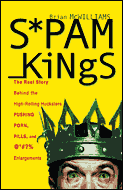A brief history:
- Spammers send mail directly to victims.
- Server admins block by source, victims complain and try to get spammers kicked off their networks.
- Spammers relay through third-party servers to disguise their origin.
- Server admins shut close relays, and block mail from open relays.
- Spammers relay through trojaned zombies straight to victims.
- Network admins block outgoing mail traffic except through their servers.
- Spammers relay through zombies’ ISPs’ mail servers.
- ????
We’re in the early stages of step 6, with broadband ISPs starting to block outgoing direct-to-MX mail traffic. The obvious response by spammers is, of course, Continue reading
